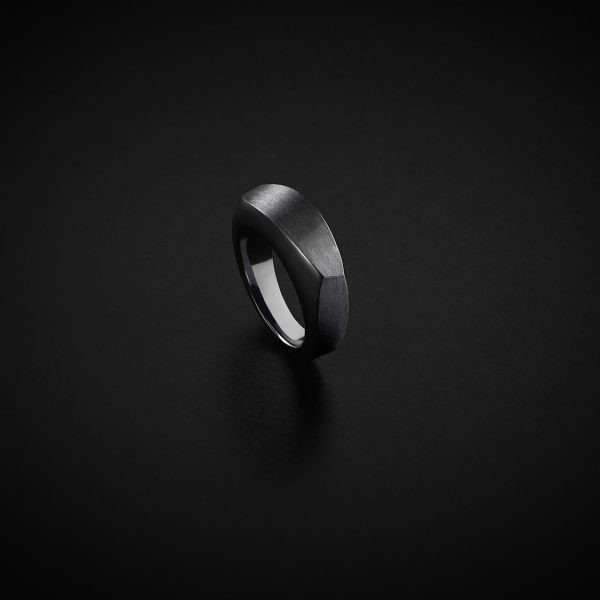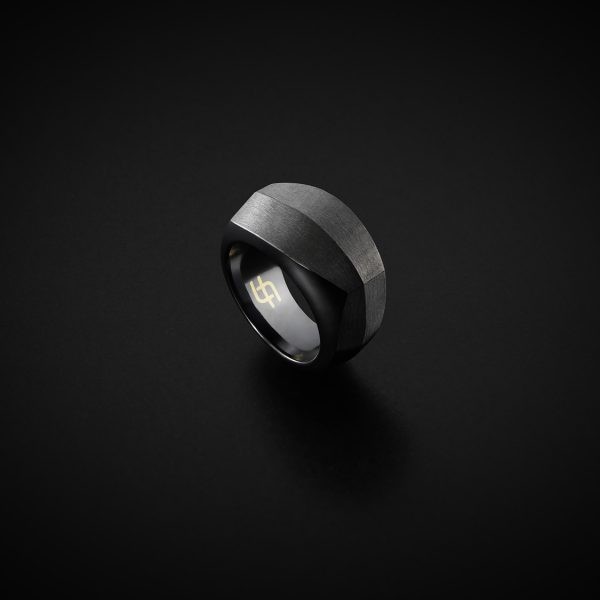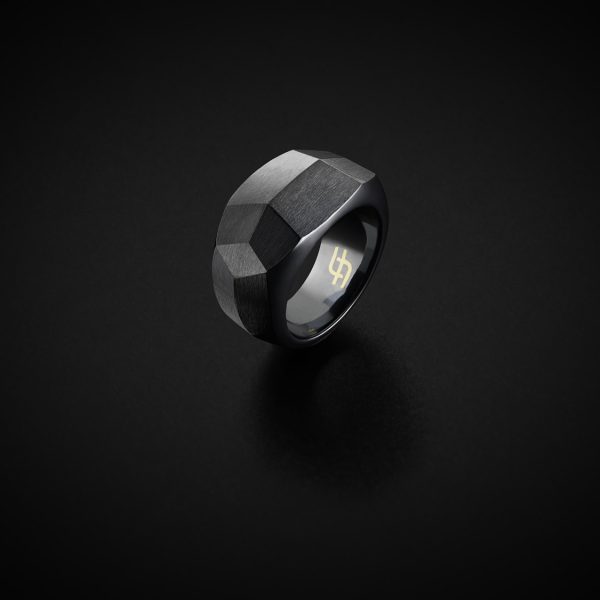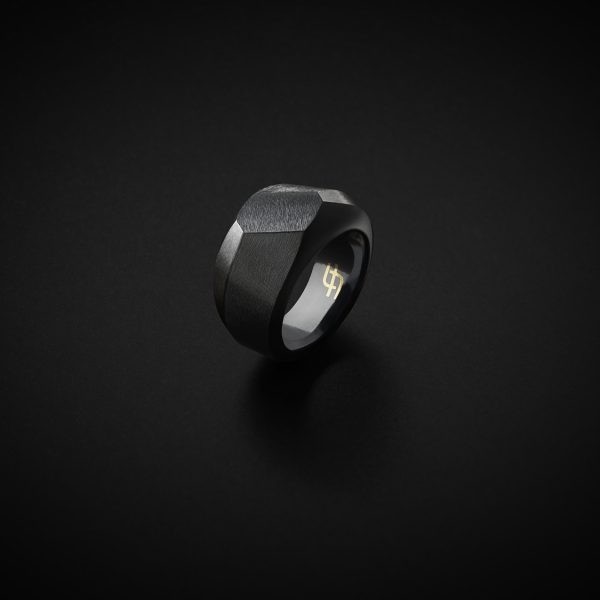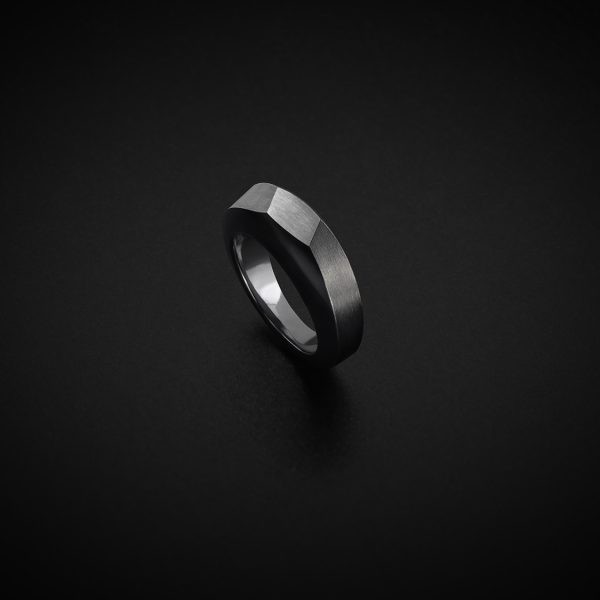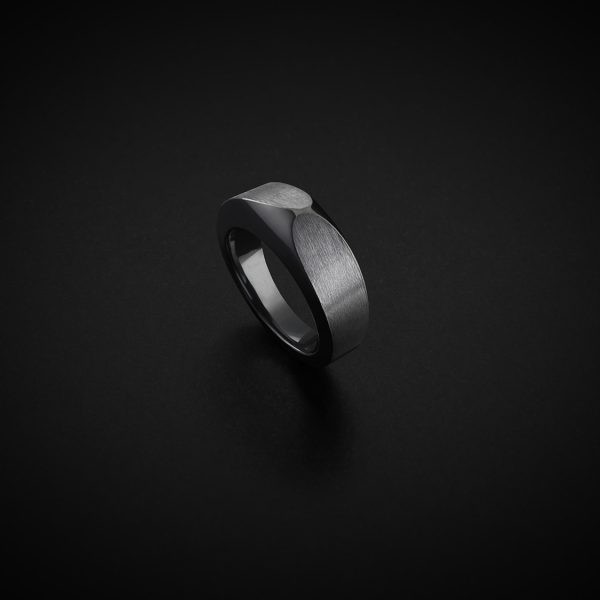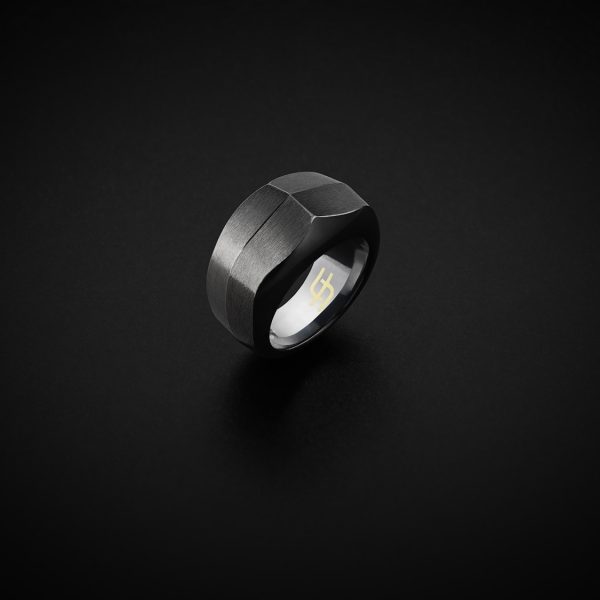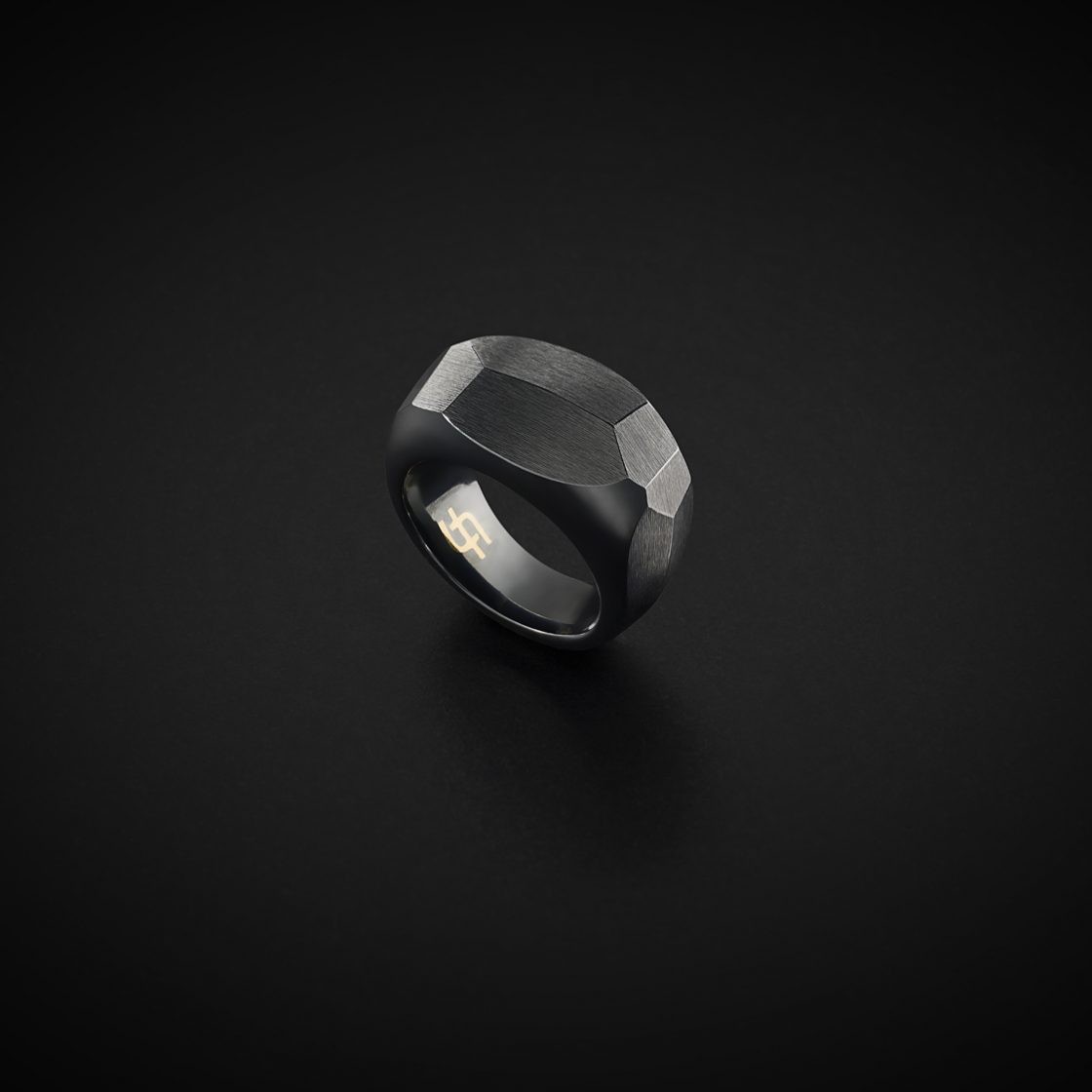CHOREUTAI
Just as the choir of an ancient Greek theatre was composed of twelve performers, so too are the Choreutai. The series of twelve rings are constituted in a closed system.
All are composed out of a singular basic shape, each with a narrow and a wide version where in each case the metal is ground and filed. In this process surfaces and sections arise. These are segmented, lines are drawn, angles breakthrough and are broken again, gables are erected and hills emerge. Simultaneously geometrical landscapes arise, with the most varied facets and characteristics.
It behooves the viewer to fathom and define the variation within the system, to begin a dialogue with each Choreute, to study and scrutinize, and ultimately to choose a ring that emits the strongest affinity. Almost never, after this process of drawing closer, is it the ring liked best at first glance.
What tells the story of perfection and quality more beautifully than this: if a new Choreute arrives on the scene, another must leave. Thus even as the collection develops further, the number stays the same.
If a new Choreute comes into being, another retires from the choir, demonstrating the highest commitment to quality and a turning away from the insatiability of quantity.
The Choreutai distance themselves from conventional jewelry, drawing attention to light through reinforcements. Conceived from darkness, they find their voice in the stillness. Through an inner affinity to a formal system, the rings begin to speak. Yet, nevertheless, they aren’t turned or addressed loudly to the public. Rather, they communicate in unison with their bearer. In a secret language that has arisen with the appropriation, with the establishment of a relationship.



